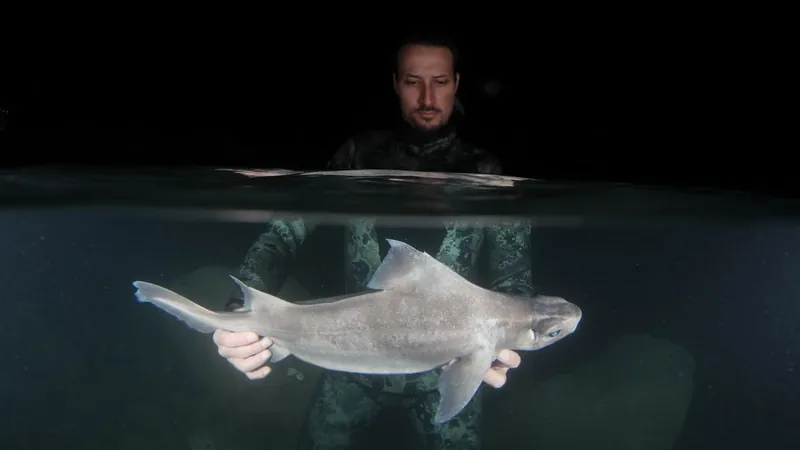
Stunning Discovery: Rare Leucistic Shark Found Off the Albanian Coast!
2024-11-07
Author: Michael
A remarkable and extremely rare creature has been unearthed off the coast of Albania: a ghostly white angular rough shark (Oxynotus centrina). Caught by a commercial trawler near Sazan Island, an uninhabited military site, this sighting occurred at a staggering depth of approximately 656 feet (200 meters).
What sets this discovery apart is the shark's unusual genetic condition known as leucism. This genetic disorder disrupts melanin production, leading to a reduction in pigmentation. Reportedly, this is the first documented case of leucism in angular rough sharks, making it a significant milestone in marine biology.
Unlike albinism, where animals completely lack melanin and have striking red eyes, leucistic animals retain normal eye pigmentation despite their pale appearance. According to Andrej Gajić, the lead author of a study published on Oct. 16 in the Journal of Fish Biology, the shark was noticeably pale with distinct whitish patches, particularly around its tail, while the eyes displayed normal retinal pigmentation.
Typically, angular rough sharks exhibit a dark gray-brown or black hue, with darker blotches that help them blend into their deep-sea habitat. Scientists have noted that despite its unusual coloration, this shark appeared to be in good health.
Gajić warns that the lack of pigmentation can render animals more visible to predators and prey alike, potentially impacting their survival rates. However, interestingly, studies on similar cases show that these color anomalies may not significantly hinder a shark's ability to feed, evade threats, or reproduce. The incidence of pigment disorders in sharks is incredibly rare; only 15 documented cases have been recorded among deep-sea species.
Experts believe leucism may originate from genetic anomalies affecting melanin production and distribution. Various factors, including embryonic development disruptions, exposure to environmental pollutants, rising sea temperatures, hormonal changes during growth, and inbreeding among isolated populations, could also contribute to such deformities.
The area of Vlorë, where this extraordinary shark was captured, could emerge as a critical hotspot for shark and ray species. Commonly found in this region are other critically endangered species like the little gulper shark (Centrophorus uyato) and the spiny butterfly ray (Gymnura altavela). Notably, some species, such as the spiny butterfly ray, have not been sighted in the Adriatic Sea this century, highlighting the ecological significance of ongoing research and conservation efforts in these rich waters.
As researchers continue to explore how human activities, such as pollution and overfishing, affect marine life, the preservation of sharks like this leucistic wonder becomes more vital. This discovery not only captivates the imagination but also underscores the importance of protecting these enigmatic deep-sea dwellers from the threats they face in today's rapidly changing environment.









 Brasil (PT)
Brasil (PT)
 Canada (EN)
Canada (EN)
 Chile (ES)
Chile (ES)
 España (ES)
España (ES)
 France (FR)
France (FR)
 Hong Kong (EN)
Hong Kong (EN)
 Italia (IT)
Italia (IT)
 日本 (JA)
日本 (JA)
 Magyarország (HU)
Magyarország (HU)
 Norge (NO)
Norge (NO)
 Polska (PL)
Polska (PL)
 Schweiz (DE)
Schweiz (DE)
 Singapore (EN)
Singapore (EN)
 Sverige (SV)
Sverige (SV)
 Suomi (FI)
Suomi (FI)
 Türkiye (TR)
Türkiye (TR)